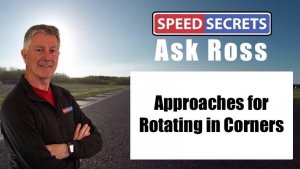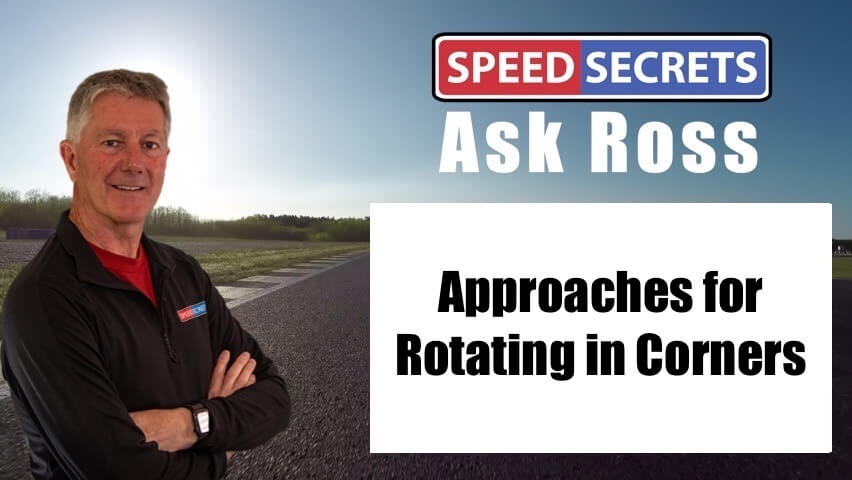 Q: “I wonder if you would care to dissect: More slowing, shorter time to rotate, and sooner on the throttle, versus less slowing, longer time to rotate, and later on the throttle… and how these trade-offs work for a car with low torque versus high torque.”
Q: “I wonder if you would care to dissect: More slowing, shorter time to rotate, and sooner on the throttle, versus less slowing, longer time to rotate, and later on the throttle… and how these trade-offs work for a car with low torque versus high torque.”
A: If you’re asking which is more important, corner minimum speed or getting on throttle earlier, the answer is “Yes!”
If I read what you’re asking correctly, it has to do with whether the corner requires a lot of rotation (which would typically be a tight radius corner), or it’s more of a longer, faster corner; and whether the priority is corner entry or exit speed. Let me take a stab at this.
More slowing, shorter time to rotate, and sooner on the throttle: This approach is often referred to as the “slow in-fast out” approach. It involves slowing the car down more at the beginning of the corner, which allows for a shorter rotation time and the ability to get on the throttle sooner. This can be beneficial for a car with high torque, as it allows the driver to take advantage of the car’s power earlier, leading to higher speeds on the straightaway. However, it’s important not to over-slow, as this can negate the benefits of getting on the throttle earlier.
Less slowing, longer time to rotate, and later on the throttle: This approach involves carrying more speed into the corner, which results in a longer rotation time and a later application of the throttle. This can be beneficial for a car with low torque, as it allows the driver to maintain more speed through the corner, compensating for the car’s lack of power on the straightaway. However, carrying too much speed into the corner can delay getting back to full throttle, making you slower on the straightaway.
It seems that with a high-powered car, one would be okay with slowing more, rotating it, and then accelerating hard out of the corner, since it can get back up to speed more easily than a low-powered car. There is some truth to this, but it’s easy to go too far with this. If you had 2,000 horsepower, would you still not rather begin accelerating from 60MPH than from 58MPH? Low-horsepower cars are referred to as “momentum cars” because you don’t want to slow them down, since they don’t re-accelerate as well as one with more power. Again, there’s some truth to this, but I like to think that all cars are “momentum cars” because I’d rather begin accelerating from a higher speed in any car.
I think a more important part of your question is the amount of time needed to rotate the car, and whether that means slowing the car more, or delaying the application of the throttle. Of course, there’s not a yes or no answer to this, as “it depends” (sorry, but I had to say it!).
In all of these cases, the key is to find the right balance between entry speed, rotation time, minimum speed, and throttle application, while using the strengths of the car’s performance the best way possible. This balance will vary depending on the characteristics of the car and the specific corner. Experimentation and practice are crucial for finding the optimal approach for each situation.
And it’s this experimentation that I feel is the most fun part of our sport. If every corner, in every car, in every condition… was best driven the same way, we’d all get bored and go find another sport to keep us interested. Fortunately, that’s not the case with high-performance and race driving!

